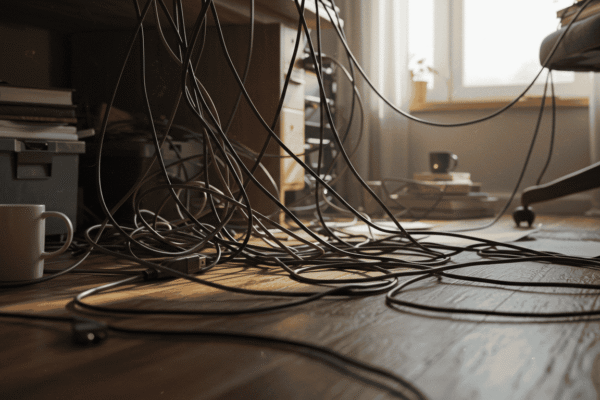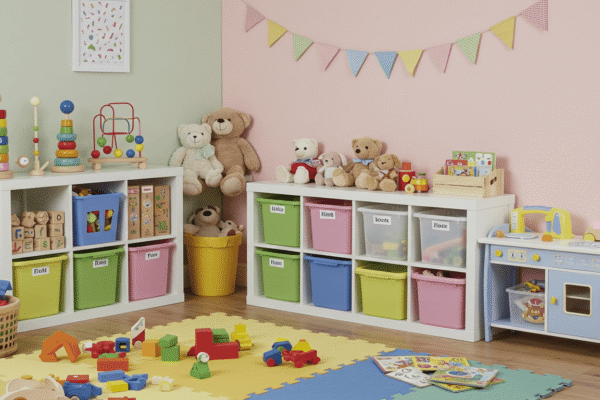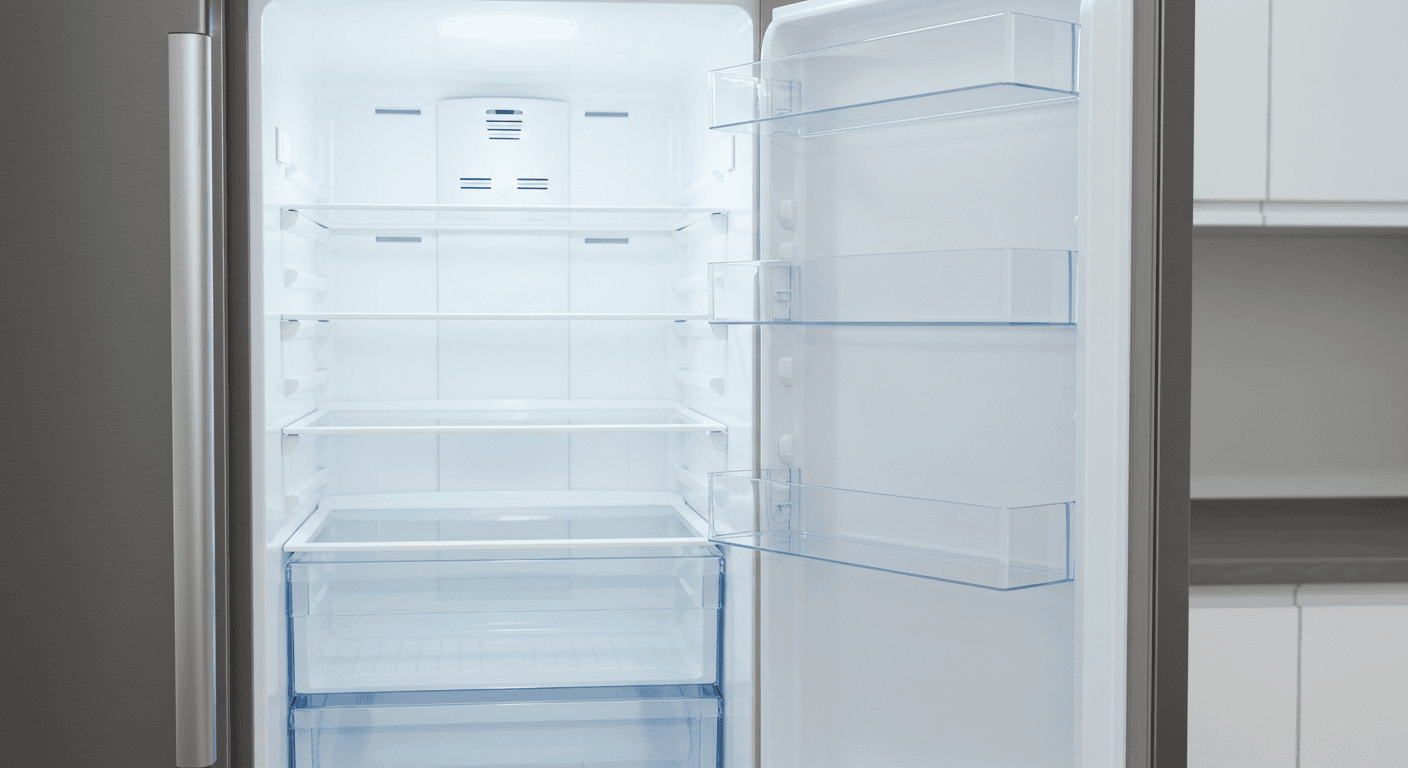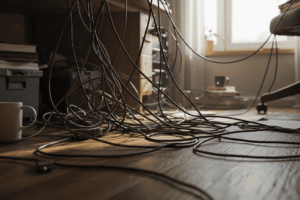Clean refrigerator routines are essential—not just for hygiene, but for your health and energy bills too. But here’s the catch: many people unknowingly make mistakes that can undo all their hard work. From skipping key steps to using the wrong products, these refrigerator cleaning mistakes can lead to lingering odors, bacteria build-up, and even a shorter appliance lifespan. In this post, we’ll walk you through the top mistakes to avoid when you clean refrigerator and give you smart, safe, and surprisingly simple tips to do it the right way.
The Right Way to Clean Your Refrigerator Starts with Knowing What Not to Do
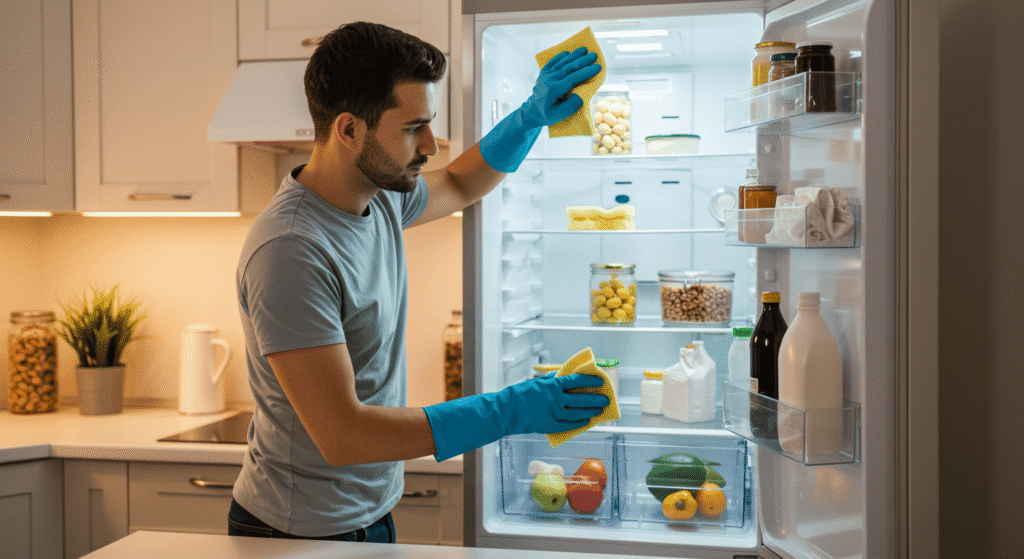
Cleaning a refrigerator might seem straightforward, but many people unknowingly follow ineffective or even harmful practices. Understanding the common pitfalls is the first step toward a truly clean refrigerator that stays fresh longer and keeps your food safe. By knowing what to avoid, you’ll save time, prevent damage to your appliance, and maintain better refrigerator hygiene.
Why Cleaning Your Refrigerator Is More Important Than You Think
Regularly maintaining a clean refrigerator goes beyond keeping it tidy. A neglected fridge can become a breeding ground for bacteria and mold, which can contaminate your food and cause unpleasant odors. Additionally, a dirty fridge operates less efficiently, leading to higher energy consumption and potential repairs. Taking proper care through thoughtful cleaning habits helps prolong your appliance’s life and safeguards your family’s health.
Common Misconceptions About Cleaning Fridges
Many myths surround fridge cleaning. For example, some believe harsh chemicals are necessary to disinfect surfaces, but this can leave harmful residues and unpleasant smells. Others think a quick wipe-down without emptying the fridge is enough, which often spreads bacteria instead of removing it. Understanding these misconceptions allows you to adopt safer, more effective methods using natural cleaners and proper techniques.
Mistake #1 – Cleaning Without Unplugging First
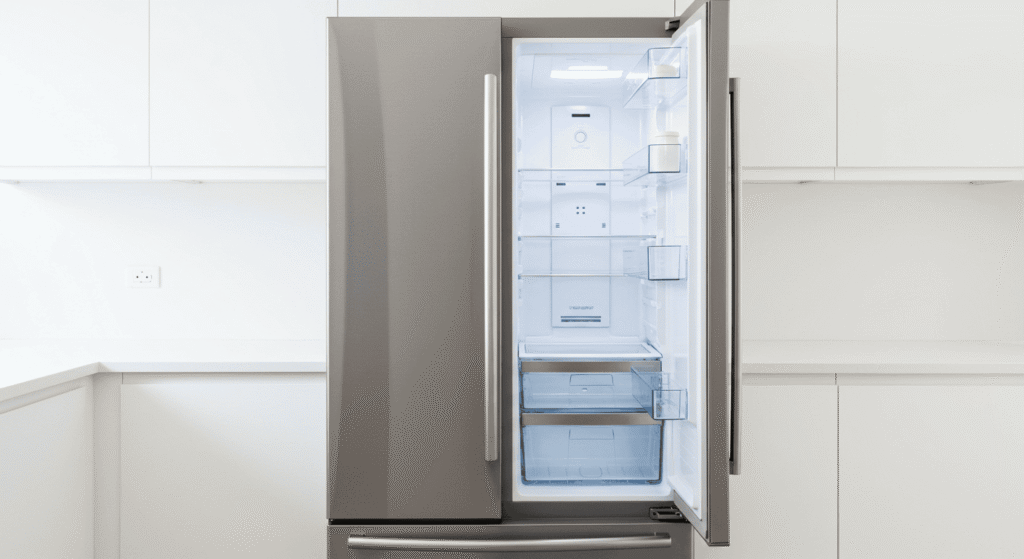
Cleaning your refrigerator without unplugging it is a common but risky mistake. Many underestimate the importance of powering down before starting the cleaning process, which can lead to safety issues and reduce the effectiveness of your efforts.
Why Powering Down Matters
Turning off your fridge before cleaning helps protect you from electrical hazards. It also allows the appliance to rest, preventing energy waste while the door remains open during cleaning. Properly powering down ensures a safer and more efficient cleaning session.
Safety Hazards & Energy Waste
Leaving the refrigerator plugged in while cleaning can pose risks such as electrical shock, especially if water or cleaning solutions come in contact with the appliance’s electrical components. Additionally, an open fridge uses extra electricity trying to maintain a cold temperature, which is unnecessary when the door stays open for extended periods.
| Step | What to Do | Why It Matters |
|---|---|---|
| 1 | Turn off power | Prevent shock and save energy |
| 2 | Empty fridge | Avoid spoilage and spills |
| 3 | Leave door open | Let it air out to prevent odor |
Mistake #2 – Not Removing All Items Before Cleaning
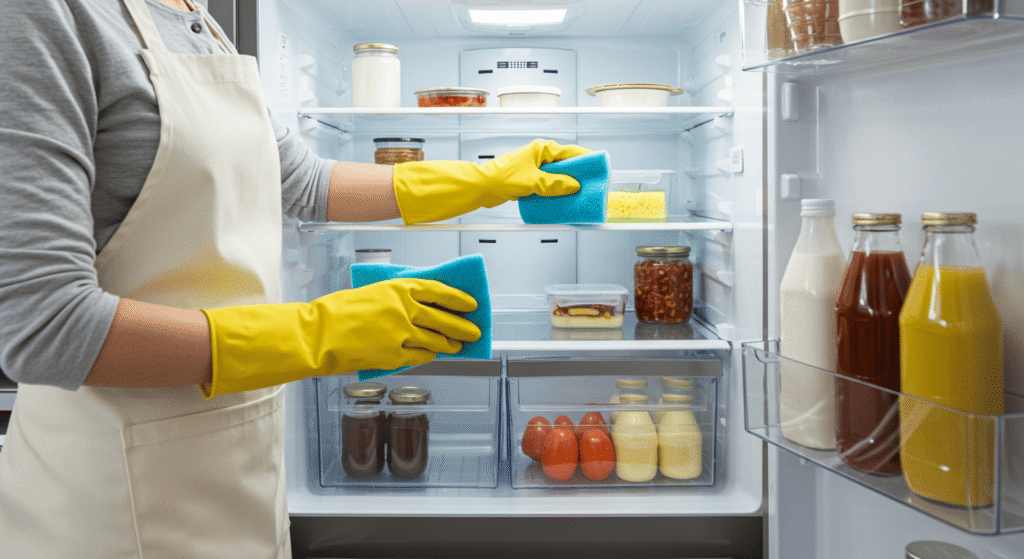
Cleaning a refrigerator without first removing all the items is a mistake that can actually spread bacteria instead of eliminating it. Taking the time to empty the fridge completely is essential for a thorough and effective cleaning process.
Skipping This Step Spreads Bacteria
When you clean around food items instead of removing them, you risk cross-contamination. Bacteria and mold can transfer between surfaces and food packaging, leading to potential health hazards. A truly clean refrigerator requires that every item be taken out so you can clean every corner properly.
What to Toss, Keep, and Freeze
Before starting the cleaning, it’s important to sort through your fridge contents. Get rid of anything expired or spoiled, and decide which items need to be kept chilled elsewhere while you clean. Proper handling of perishables prevents food waste and keeps your fridge organized.
Checklist:
✅ Toss expired items
✅ Group items by type
✅ Store perishables in a cooler
✅ Label anything going back in
Mistake #3 – Using Harsh Chemicals on Food Surfaces
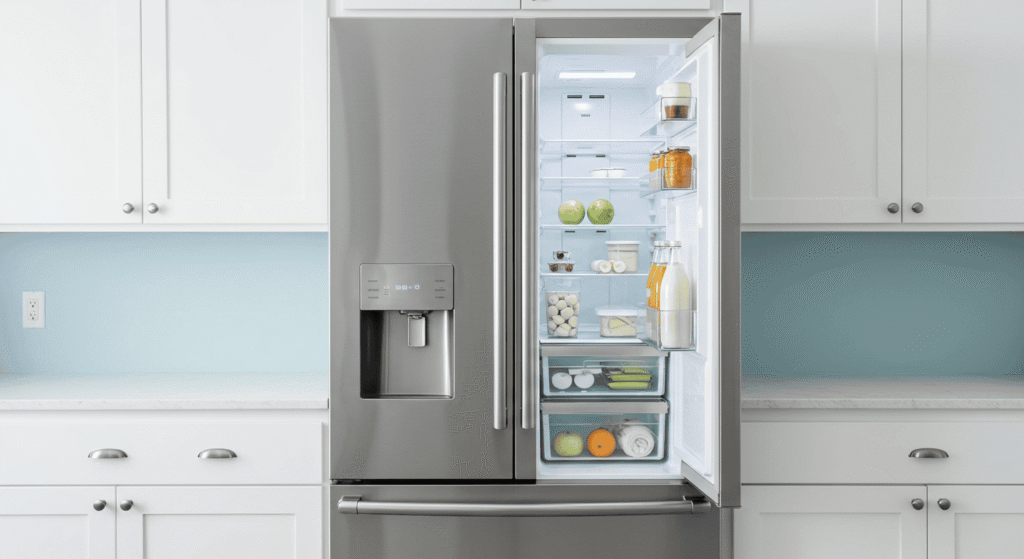
Many people believe that strong chemicals are necessary to disinfect their refrigerator, but using harsh cleaners on surfaces that come into contact with food can be risky. These substances may leave harmful residues or unpleasant odors that affect your food’s safety and taste.
The Risk of Residue & Odors
Harsh chemical cleaners often leave behind residues that are difficult to rinse off completely. These residues can contaminate food stored afterward, posing health risks. Additionally, strong odors from these chemicals can linger, making your fridge smell unpleasant and potentially affecting the flavor of your food.
Natural Alternatives That Work
Instead of harsh chemicals, natural cleaning agents provide a safer and equally effective way to maintain a clean refrigerator. Ingredients like vinegar and baking soda disinfect, deodorize, and remove stains without harmful side effects.
DIY Natural Cleaning Solution
- 1 cup white vinegar
- 1 cup warm water
- A few drops of lemon juice
Mix these ingredients in a spray bottle and use to wipe down fridge surfaces safely and effectively.
| Cleaning Agent | Safe? | Effective? | Leaves Smell? |
|---|---|---|---|
| Bleach | ❌ | ✅ | ✅ |
| Vinegar | ✅ | ✅ | ❌ |
| Baking Soda | ✅ | ✅ | ❌ |
Mistake #4 – Ignoring Hidden Zones Like Drawers and Seals
A common oversight when cleaning a refrigerator is neglecting the hidden areas like drawers, seals, and shelves. These spots often harbor bacteria and mold because they are harder to reach and clean properly.
Bacteria Hotspots You Might Be Missing
Drawers and door seals provide warm, moist environments that encourage bacterial growth if not cleaned regularly. Food particles, spills, and moisture get trapped in these areas, making them perfect breeding grounds for germs and unpleasant odors.
How to Deep Clean Drawers, Shelves, and Gaskets
To achieve a thorough clean refrigerator, remove all removable parts such as drawers and shelves. Soak them in warm, soapy water, scrub gently with a soft brush, and rinse well. Don’t forget to clean the rubber door gaskets carefully using a mixture of vinegar and water to remove mold and prevent deterioration.
Visual Suggestion:
Include a zoom-in diagram or annotated image highlighting common areas often missed during fridge cleaning — such as door seals, drawer tracks, and under shelves — to help readers identify and target these bacteria hotspots.
Mistake #5 – Forgetting to Clean Refrigerator Coils
One of the most overlooked but crucial tasks in maintaining a clean refrigerator is cleaning the coils. Dirty coils are the #1 cause of poor cooling efficiency and can lead to higher energy bills and appliance breakdowns.
The #1 Cause of Poor Cooling Efficiency
When dust and dirt accumulate on the refrigerator coils, the appliance has to work harder to keep your food cold. This not only wastes energy but also puts unnecessary strain on the compressor, potentially shortening the fridge’s lifespan.
When and How to Clean Coils (Without Opening Up the Fridge)
Cleaning the coils doesn’t require disassembling your refrigerator. Most coils are located at the back or underneath the fridge. Use a coil brush or a vacuum cleaner attachment to gently remove dust and debris every six months. Make sure the fridge is unplugged during this process to avoid any accidents.
| Task | Frequency |
|---|---|
| Clean coils | Every 6 months |
| Deep clean interior | Monthly |
| Check for expired food | Weekly |
Mistake #6 – Putting Food Back Immediately
Many people make the mistake of returning food to the refrigerator right after cleaning, but doing so can introduce moisture and bacteria back onto freshly cleaned surfaces, undoing your hard work.
The Dangers of Reintroducing Moisture and Bacteria
When you put food back too soon, residual moisture can create a damp environment that encourages bacterial growth. This can lead to unpleasant odors, quicker food spoilage, and potential health risks. Allowing your fridge to dry properly helps maintain a truly clean refrigerator.
Letting Your Fridge Dry the Right Way
To ensure your fridge is completely dry before restocking, follow these simple steps. Wiping down surfaces removes leftover moisture, and leaving the door open allows air circulation to speed drying. Waiting a bit before plugging the fridge back in also helps prevent condensation buildup.
Dry Time Checklist:
✅ Wipe all surfaces dry
✅ Leave door open for 15–30 mins
✅ Wait before powering back on
Mistake #7 – Poor Organization After Cleaning
After putting in the effort to thoroughly clean your refrigerator, one common mistake is putting items back in without any order. This disorganized approach can quickly lead to clutter, making it harder to find what you need and increasing the risk of spills and spoilage.
Putting Things Back in Randomly Creates More Mess
Randomly placing groceries and leftovers back into the fridge can create overcrowded shelves and blocked airflow, which reduces cooling efficiency. It also increases the chances of cross-contamination, especially when raw foods are mixed with ready-to-eat items.
Smart Storage Ideas for Fridge Efficiency
Organizing your fridge properly not only keeps it tidy but also helps food stay fresh longer. Storing items in designated zones allows for better temperature control and easier access, making your kitchen routine smoother and more efficient.
| Section | Best Items to Store |
|---|---|
| Top shelf | Ready-to-eat foods |
| Middle shelf | Dairy, leftovers |
| Bottom shelf | Raw meat (in container) |
| Drawers | Fruits & vegetables |
Mistake #8 – Not Setting a Regular Cleaning Schedule
It’s easy to forget about cleaning your refrigerator when it’s out of sight, but neglecting this essential task can lead to unpleasant odors, bacteria buildup, and food spoilage.
Out of Sight, Out of Mind? Think Again
Ignoring regular maintenance allows grime and bacteria to accumulate, making future cleanings more difficult and less effective. A consistent cleaning routine helps keep your fridge fresh, hygienic, and running efficiently.
Easy Ways to Stay on Top of Fridge Cleaning
Creating a cleaning schedule doesn’t have to be complicated. Setting reminders or using a simple checklist ensures that you don’t miss important cleaning tasks. Consistency keeps your refrigerator hygiene at its best year-round.
Suggestion:
Include a printable or downloadable cleaning calendar in your blog post to help readers track fridge cleaning tasks by week or month. This practical tool encourages good habits and makes fridge maintenance less of a chore.
Keep a Clean Refrigerator for Health and Efficiency
Maintaining a clean refrigerator is more than just a chore—it’s essential for your family’s health, food safety, and your appliance’s performance. By avoiding common mistakes like skipping unplugging, using harsh chemicals, or neglecting hidden spots, you ensure a fresher, safer kitchen environment. Follow the tips and schedule shared here to make fridge cleaning simple, effective, and even enjoyable. A well-kept fridge means fresher food, fewer odors, and lower energy bills—benefits worth every minute you invest.

